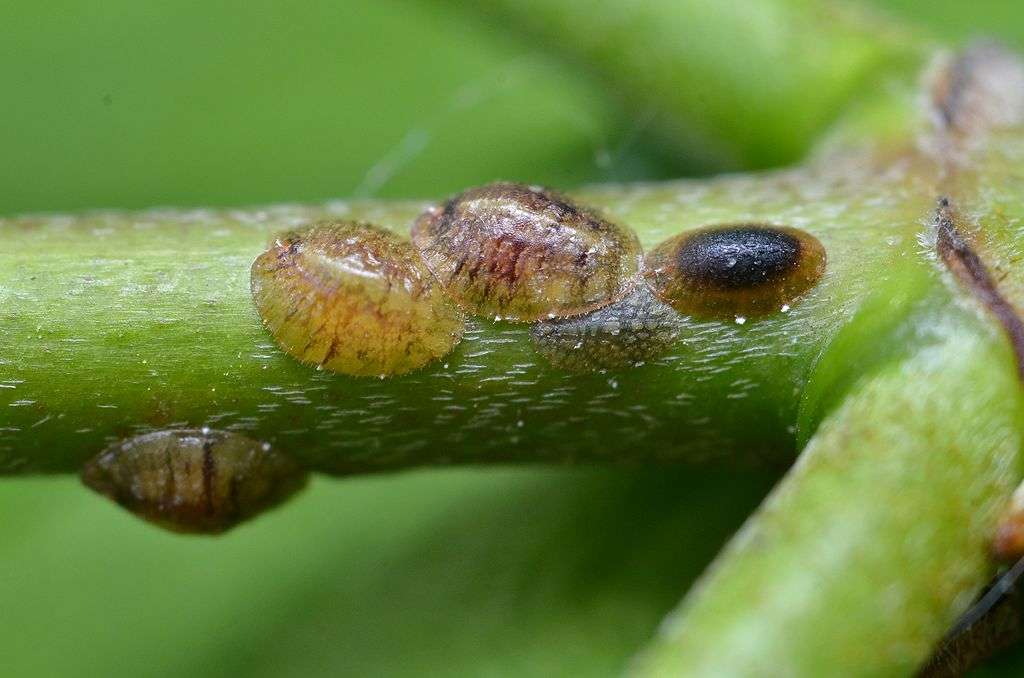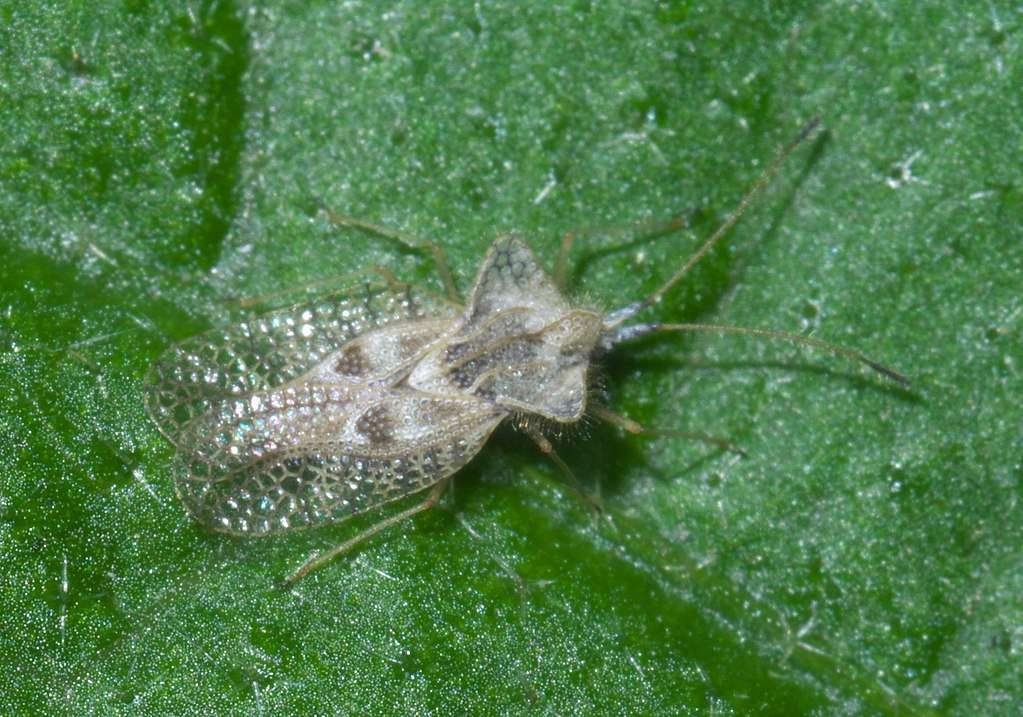


Your ornamental trees and shrubs are a valuable part of your landscape and you don’t want to see them succumb to any damage. Unfortunately, there are a number of different bugs that kill trees which can cause you major problems. These shrub and tree insects don’t care that their name isn’t on the guest list for your summer gatherings. If they find a tree or shrub that they like, they’ll crash your party in no time.
While there are a number of different pests that could be eating your tree, we’ve honed in on 5 of the most common tree and shrub insects in Northern Virginia. We'll cover how to identify them, the damage they cause, and how to get rid of them.
When this party crasher brings its “sleeping bag” along, you know it wants to stick around. In fact, it is the “bag” or “casing” that makes the bagworm easy to recognize. These bugs that kill trees suspends itself from the ornamental plants on which it feeds.

The bag is made of silk and pieces of the host tree or shrub’s foliage and may contain up to 1,000 eggs, which will hatch in late spring or early summer, at which time tiny black larvae emerge. Bagworm larvae injure plants rapidly by feeding on its needles and leaves.
There are more than 120 different kinds of trees that Bagworms are known to attack, though they prefer evergreens like juniper, spruce, or arborvitae. On evergreens, Bagworms will consume the buds and the foliage, leading to branch decline and death. If left to consume enough, the entire tree may die. On deciduous trees, bagworms chew small holes in the leaves and cause defoliation.
Another party crasher, the Japanese Beetle is one of the most social partygoers. And they don’t just come alone—they bring thousands of their closest friends. That’s because when the beetle finds a suitable host plant, it emits pheromones that attract others of its kind.

Japanese Beetles are not going to any lengths to hide their partying. In fact, they are quite easy to spot. They are highly visible flying around your property and their damage is also easy to identify. They leave behind skeleton-like leaves after they have feasted on the tender parts of the leaves, but not the veins.
While some tree insects are only problematic during one stage of life, Japanese Beetles are troublesome party crashers during their entire life cycle. They start their lives in late summer, in the form of grubs that feed on the roots of your lawn, and ultimately become Japanese Beetles that feed on your trees and shrubs in the following summer months.
If Japanese Beetles are the bold party crashers then scale insects are the ones that sneak into the party. Everything might seem fine with your trees and shrubs and then suddenly you’re noticing concerns such as twig dieback, stunted growth, or premature leaf drop, seemingly overnight. Unfortunately, scale damage often goes unnoticed until its severe. These insects are extremely small, under ⅛”.

Scale are sap-feeding insects that are named for the scale that covers and conceals their bodies. It is a shell-like waxy covering. Depending on the species, you may find scale on shrub and tree branches, stems, foliage, or fruiting bodies. Scale insects feed by using their piercing/sucking mouthparts to suck sap from trees and shrubs.
Once scale finds a party host they like, they hunker down and don’t move much. In fact, a mature adult scale will firmly attach itself to the stems or leaves of your tree and shrub, and never move again. Covered with its coat of armor, it may just look like a “bump on the branch.”
Though not actually classified as landscape insects (they are instead a type of arachnid), Spider Mites can still do quite a bit of damage to your trees and shrubs. Using their piercing/sucking mouthparts, Spider Mites can cause a lot of damage by sucking the cell contents from leaves. Their frequently found filling up their plate with a variety of evergreen plants like spruce, hemlock, and others.

At less than 1/20-inch long, Spider Mites are tiny and barely visible to the naked eye. Unfortunately, because these mites are so tiny, they are difficult to detect. You may start to notice stippled or yellowed leaves before you ever spot the pest itself. Mites can also leave very small webbing within needles or foliage stem.
You can try to scout for mites in your trees and shrubs by holding a white piece of paper under the leaves and gently shaking them. Run your hand across the paper and if there are streaks, you’re crushing and smearing live adults.
Lace Bugs are small, inconspicuous, plant-feeding bugs. The Lace Bug has clear wings with dark patches that resemble a lace pattern, hence its name. While it may come to the party all dressed up, don’t let its dainty name fool you. Using their piercing/sucking mouthpieces, Lace Bugs draw all of the nutrients from your tree or shrub’s leaves until the plant is eventually destroyed. Their damage is similar to that of Mites and you may see stippling.

This is another sneaky party crasher. Most Lace Bugs live out their lives on the lower surface of leaves and therefore are not easily seen. Their favorite party snack are your prized azaleas, pieris, and cotoneaster, to name a few
Though you may not notice damage until later in the year, that’s only because summer puts extra stress on your trees and shrubs and can make pest damage more evident. The truth is, it’s likely been occurring for a long time already. These party crashers may have been showing up for years unbeknownst to you.
That’s why a proactive approach that includes a long-term maintenance plan is your best bet against these destructive party crashers.
Kingstowne offers this type of protection for shrubs and trees up to 20 ft. in height.
This is important because while pests are a definite possibility for your tree and shrub problems, it could also be something else. Disease or even environmental stressors can also mimic similar symptoms. But getting your landscape plants on a Plant Health Care program that is going to strengthen the overall health of your trees and shrubs will allow them to better defend themselves against pests—as well as other potential problems.
That means that instead of worrying about pests crashing your summer landscape, you can just get back to enjoying the party yourself.
Do you want to be sure that your trees and shrubs are protected against pests so that your Alexandria, Arlington, or Springfield, VA landscape can look its best? Then request your quote for our comprehensive Plant Health Care program and relax as you get the royal treatment.
Image sources: bagworm, japanese beetle, scale insects on green branch, spider mites, lace bug

Since 1997, Krisjan has led the Kingstowne team with one simple philosophy, treat every customer like the “only” customer. His passionate pursuit of impeccable customer service has resulted in 24 successful years and a thriving company with over 85 employees, helping thousands of homeowners in the Alexandria, Arlington, and Springfield, VA area get what they want - a worry-free property they can be proud of.




If You're Looking For a Sign, This is It.
Seriously, that lawn isn't getting any better on it's own. Mrs. Jones just called the HOA on you